





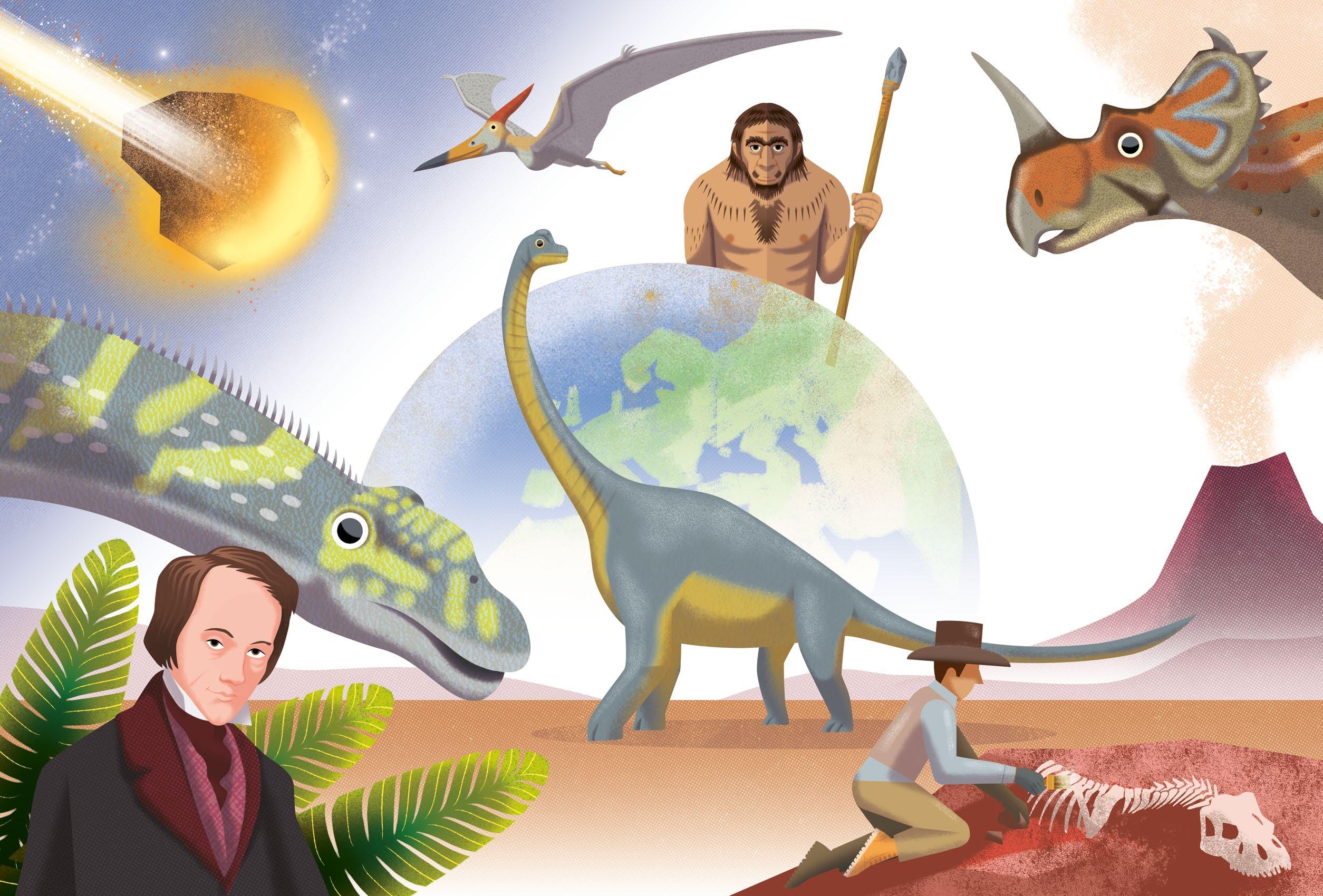

Flipping through a book about dinosaurs, there are lots of questions we might ask. Why did they sometimes look so funny? What is that strange feature? Or, why did some have feathers and not nurse their young?
Or even, why didn’t they pose a danger to early humans and why are there no more dinosaurs today?
Every answer will help you discover what life was like for these ancient lizards and why some scientists now think that they haven’t really disappeared and that, in fact, they’re much closer to us than you might think.
The full name that paleontologists gave this dinosaur is Tyrannosaurus rex, meaning “king of the tyrant lizards.” It’s often shortened to T. rex, a rather fun nickname, don’t you think?
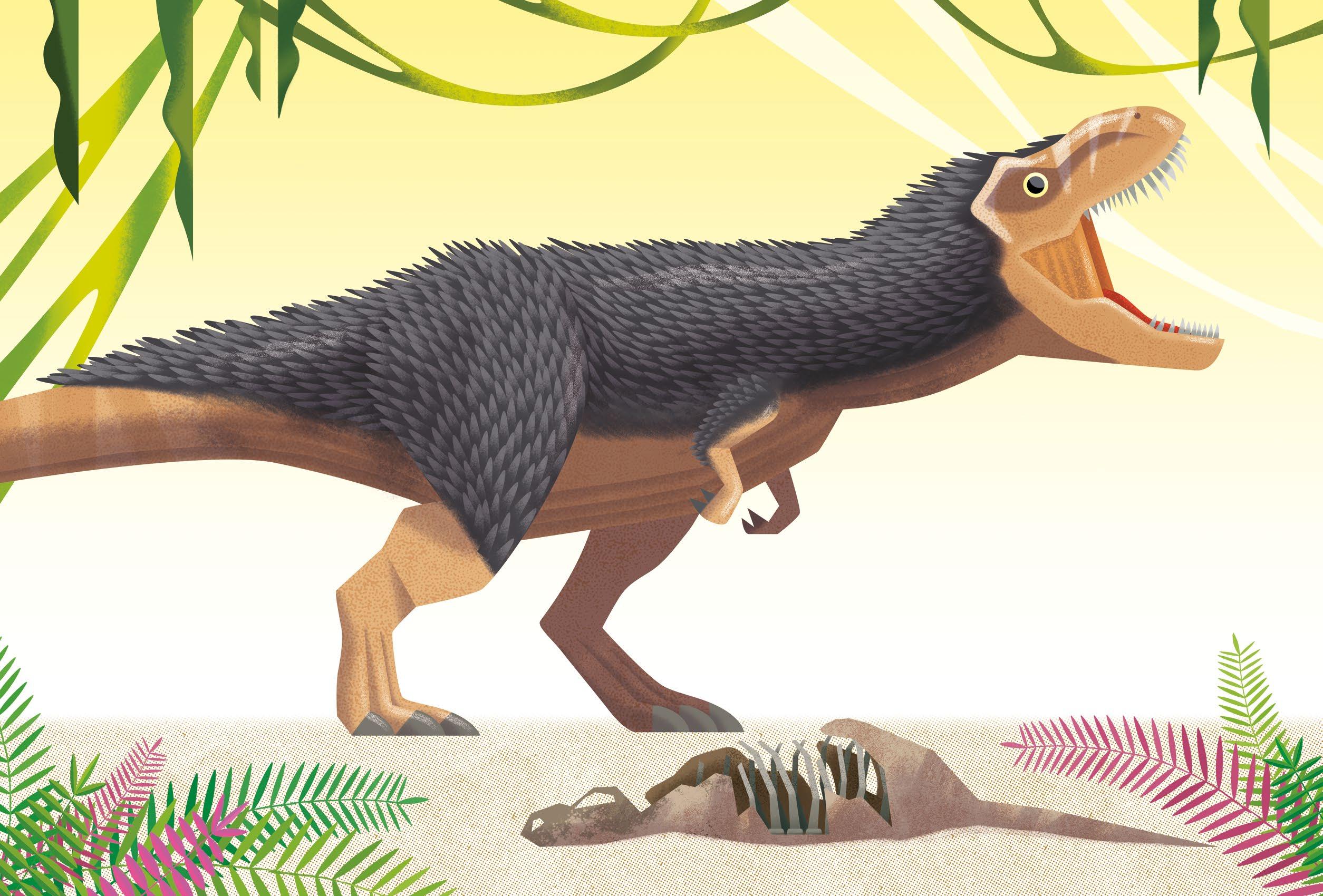
Why were almost all carnivorous dinosaurs bipedal, that is, why did they walk on two
Many carnivorous dinosaurs, especially the medium to large ones, were bipedal because they only used their hind legs to walk, leaving the front ones free for other things, such as firmly grasping prey.
Why couldn’t carnivorous dinosaurs chew their food?
Dinosaurs only used their teeth to hold their prey and tear it into pieces. Those big bites were then swallowed whole, like sharks and crocodiles do today.

Those tiny arms look ridiculous on such a large, ferocious animal. Exactly how they were used (or not used) is still unknown. Some paleontologists think they were a way for T. rex to lift itself off the ground.
is
According to many researchers, since T. rex was so enormous, it couldn’t possibly have ever run fast enough to chase and catch up with its prey, so it had to “make do“ and eat the carcasses it came across.
The sail ensured that Spinosaurus dinosaurs could see each other, and it helped them attract a mate and scare intruders away from their territory.
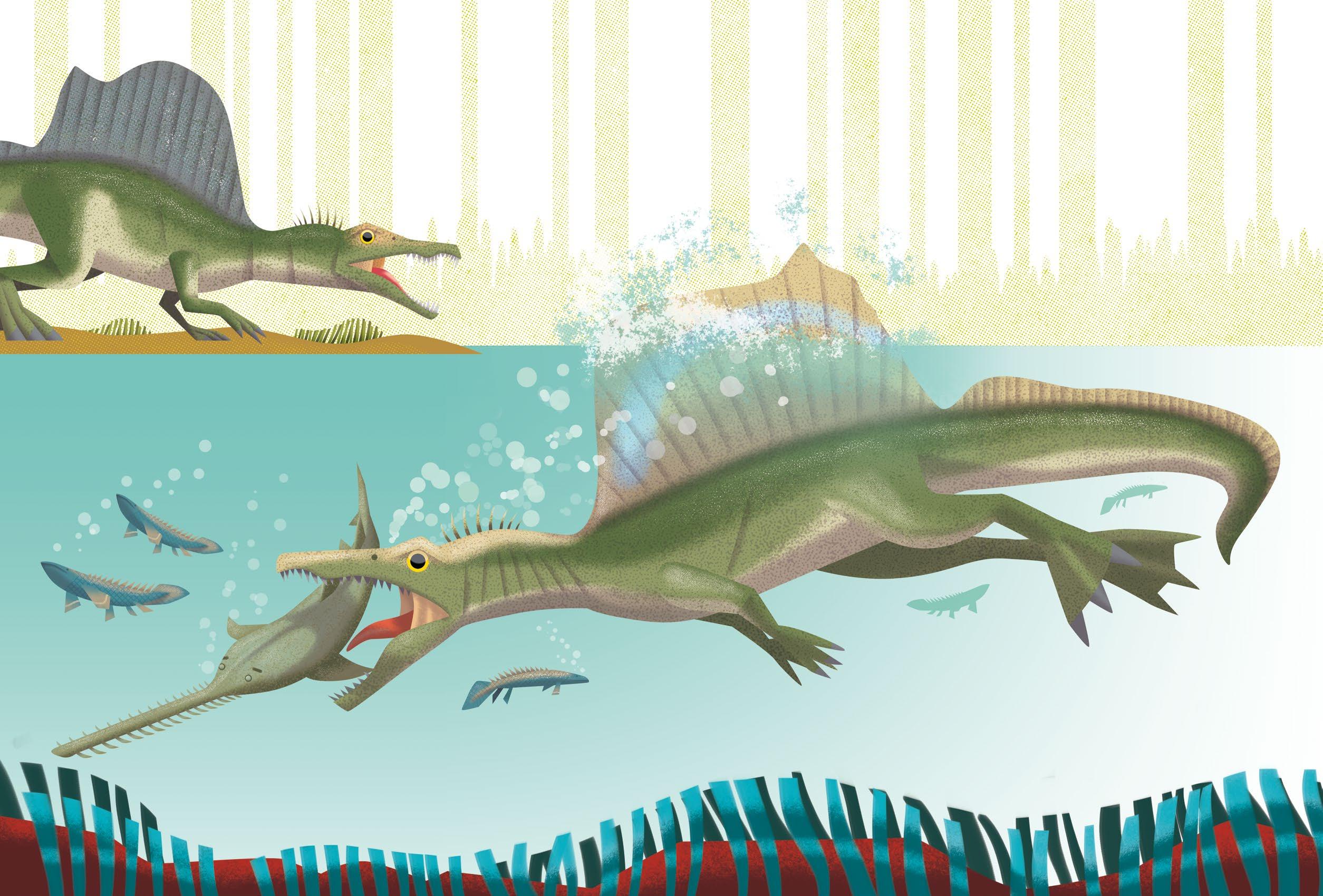
Spinosaurus lived in rivers because rivers were full of fish, its favorite meal. Also, it was the only creature in that habitat, which meant there was no one to clash with.
Cone-like teeth helped Spinosaurus easily grab and hold fast, slippery aquatic prey, such as fish.
For many carnivores, their mouth was (and is) the only weapon for catching prey. For dinosaurs, their jaws were veritable bone-crushing machines that could tear off huge amounts of flesh with a single bite.
Spinosaurus’s tall tail was shaped like a fin. It must have given the dinosaur a strong boost while swimming.

Spinosaurus spent much of its time in rivers, where it was able to swim easily because of the taut skin between its toes. Its webbed feet resembled those of ducks today.
Why did Velociraptor have a long talon on the second toe of each foot?
A single, elongated claw on each foot could have served, as in hawks today, to skewer prey and hold it so that it could not escape.
Why were several carnivorous dinosaurs also very fast?
For predatory dinosaurs, sprinting and speed were essential to catching their prey. They ran fast thanks to very muscular hind legs.
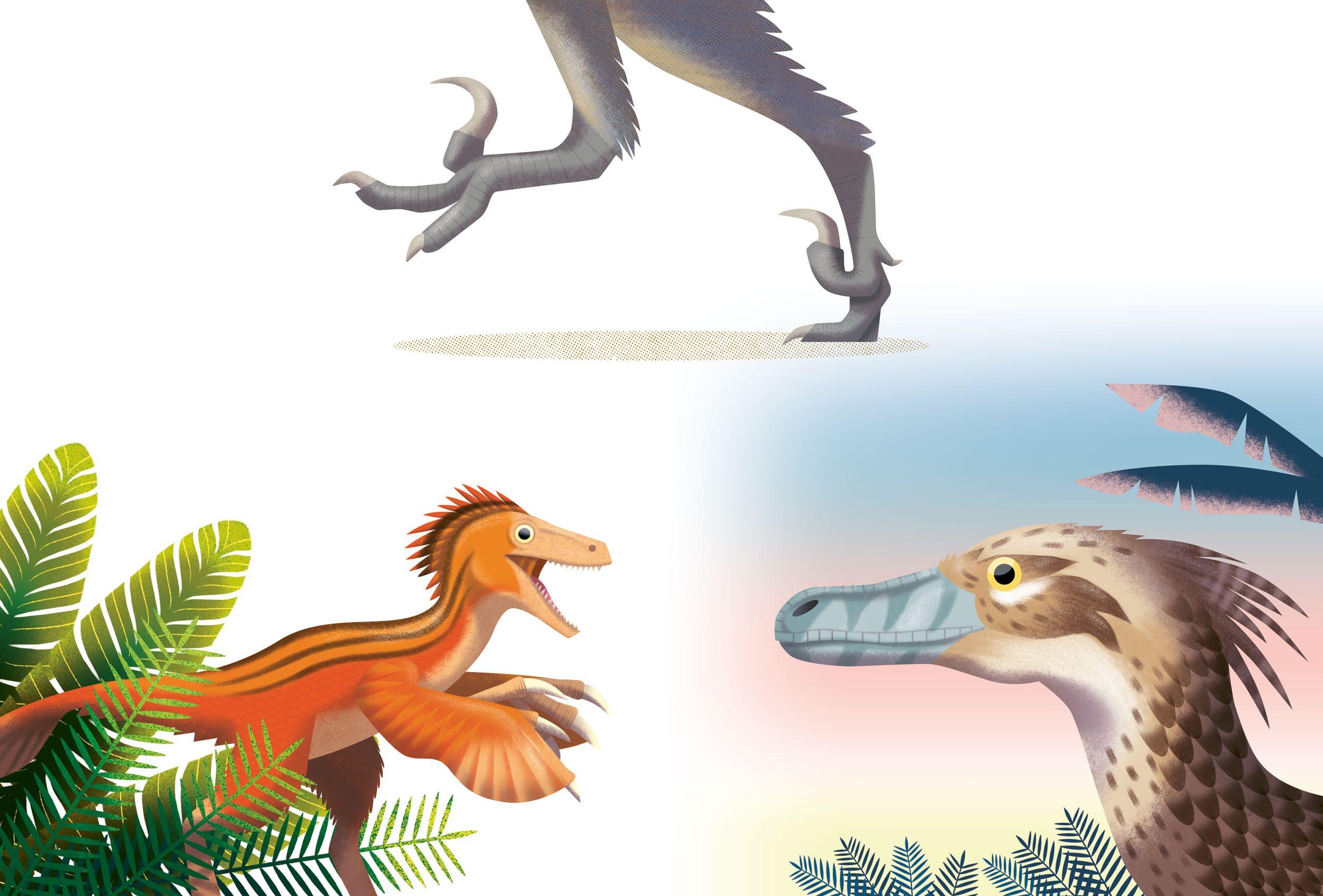
Why do experts think that Velociraptor had a good sense of smell?
Studying the skull of this dinosaur, paleontologists have found that the part of the brain corresponding to the sense of smell was particularly developed.
For this dinosaur, its talon was indispensable for catching prey. If it broke, Deinonychus was in danger of starving to death. So, it held it up off the ground as it ran to keep it safe.

wasn’t
When Deinonychus chased its prey, it probably zig-zagged to grab it. Its shorter toenails probably provided a good amount of grip on the ground.
Why is it thought that Velociraptor was nocturnal?
The eyes of these small predators were large enough to see even at night.
Why did Yi qi have small sharp teeth on the tip of its snout?
Its small peg-shaped teeth were used to catch insects and spiders, which it probably chased by climbing along tree branches.

did Microraptor have four wings?
Its arms were covered with long feathers, but unlike those of birds, they were too small for flight. However, the wings on its rear limbs were used to support itself when flying.
Why did Yi qi have a long, thin “extra finger” on each
The name of this small dinosaur, discovered in presentday China, means “strange wing,“ precisely because its wings, very similar to those of bats, were formed by a very long wrist bone that held the skin taut between the hand and the body.

Why is it thought that Mononykus hunted small animals at night?
Having small teeth, it could only eat small prey such as insects and lizards. Its large eyes, on the other hand, suggest that it could hunt under the cover of night, when it was cooler and there were fewer predators around.
Why did Mononykus have a single claw on its forearms?
This small dinosaur had short, stubby arms and a single long claw placed on the thumb. Such a large nail was perhaps used to pierce the nests of the insects it fed on.
Why did Brachiosaurus have a nose on its forehead?
Wide nostrils opened on the dinosaur’s head, protected by enlarged bones. This position prevented leaves from going up its nose as it ate.
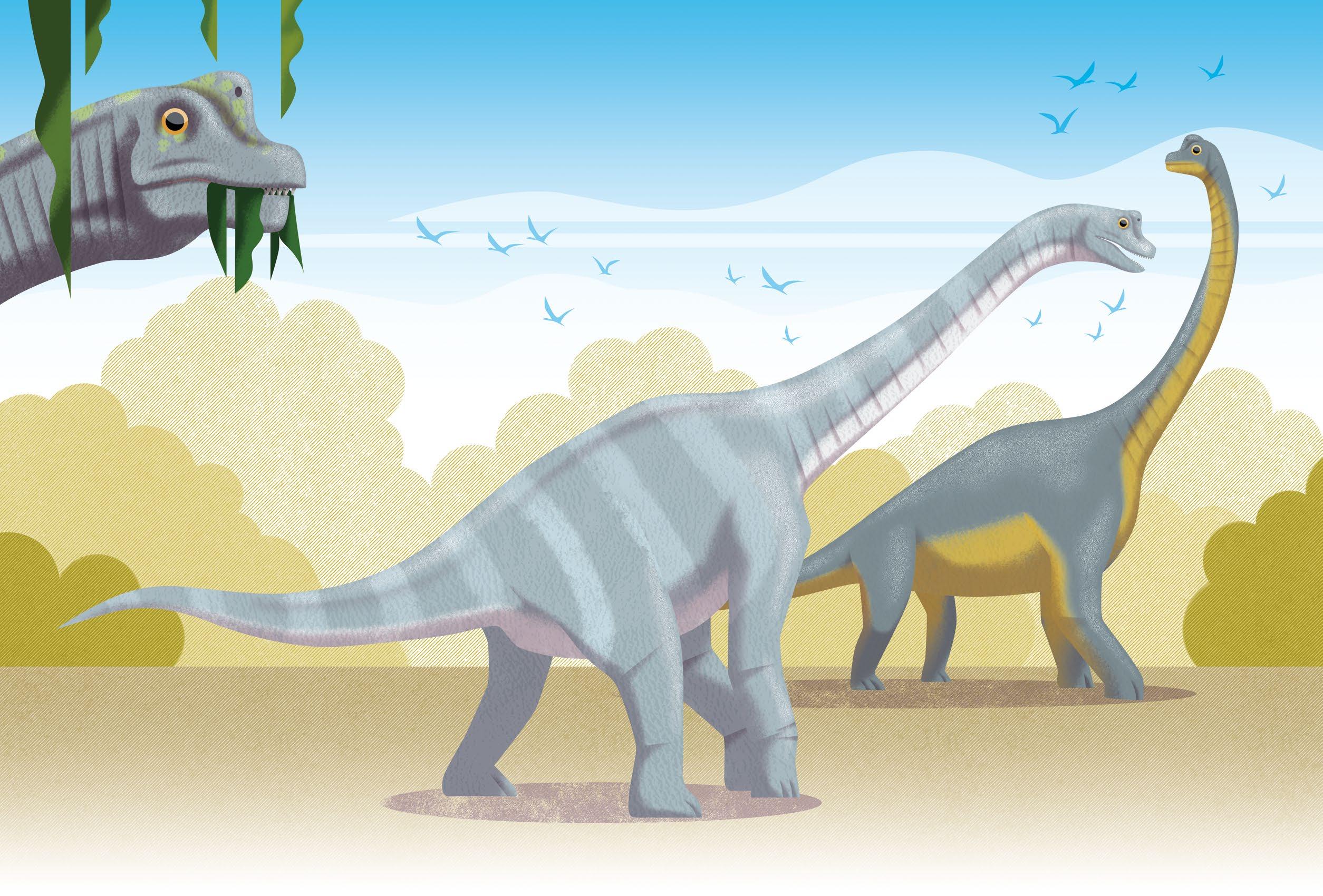
Why did sauropods’ stomachs need to be so large?
Their large stomachs let them ingest a lot of food in very little time. Digestion, on the other hand, like for today’s cattle, could be a very long process.
Why were Brachiosaurus’s legs as thick as columns?
Its size was impressive, and to support such a heavy body, it required large, straight, vertical legs.
Moving huge dinosaur bodies required a lot of energy. Instead, if they effortlessly moved only their neck, sauropods could stand still and also reach the leaves in all the trees around them.

Like elephants, they walked on their toes, which, as they spread out, were cushioned by a fat pad, not visible from the outside. This pad helped support their body weight while walking.
Why is Argentinosaurus considered a record-breaking dinosaur?
It’s considered the largest animal that has ever walked on land. Experts believe it was as long as two school buses and weighed as much as 10 African elephants.

Why did Camarasaurus have holes in its neck bones?
Paleontologists think that these holes once held air pockets, which helped make its very long neck lighter, while at the same time ensuring it was strong and robust.
Why did Bajadasaurus have long spines on its neck?
Long, forward-pointing spines extended outward from the top of Bajadasaurus’s neck. They were very elongated neck bones, and they probably helped protect that very delicate part of the body.

Why did little Amargasaurus have two rows of spines on its neck?
According to some experts, those spines were connected to one another by skin and thus formed a sail. Amargasaurus could use it to court a mate or perhaps even warm up faster in the sun’s rays.
did Therizinosaurus
It’s possible that its fearsome claws, which were over 3 feet (1 meter) long, were mainly used to bring leaf-covered branches closer to its mouth, a feast in just one bite, without having to move.

Why did Heterodontosaurus have canine-like teeth?
This dinosaur was herbivorous and ate leaves, so it’s likely that its long, sharp canine-like tusks served only to defend itself from predators.
Why is it thought that Therizinosaurus lived in the forest?
Its mouth was shaped like a beak, so it was perfect for picking up leaves, which it chewed with small teeth placed in its cheeks. The forest must have been the ideal environment for it, full of lots of food.
Being large in size, Therizinosaurus moved very slowly. It therefore avoided going anywhere without trees, among which it could hide from large predators.

Why is Heterodontosaurus called that?
Its name means “different toothed lizard.“ In fact, Heterodontosaurus not only had sharp, canine-like teeth, but also flat and large teeth for chewing food.
Why were the
Like dolphins and whales, ancient marine reptiles needed air to breathe. Thanks to nostrils on the top of their snouts, they could do so without having to poke their heads out of the water.

These reptiles lived in seas, oceans, rivers, and lakes. Fins are the best appendages to do so, letting them swim quickly and easily through the water.
did
Their necks could be longer than their body and tail combined! Perhaps that long neck was used to catch small fish swimming with their school or to search for prey in the sand on the seabed.
Why aren’t prehistoric marine reptiles dinosaurs?
Prehistoric marine reptiles are often called “dinosaurs,“ but that isn’t correct. They don’t belong to the same family, and they have very different characteristics. For example, they were unable to walk on land!

Why did plesiosaurs have a short tail (relative to their neck)?
While their long neck was used to procure a meal, their short tail was useful for swimming. That’s right, the tail was used as a rudder, to easily change direction in the water.